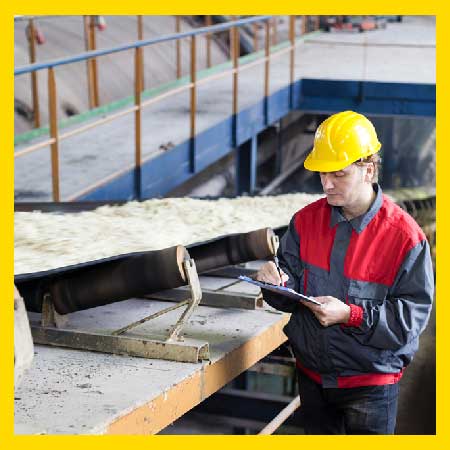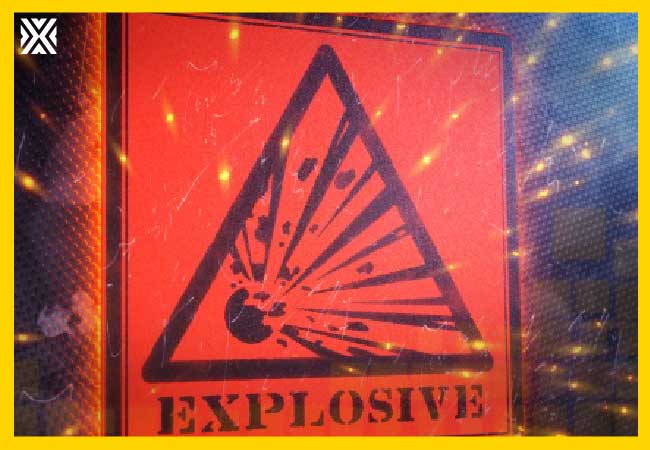Currency
January 02, 2019

The Dust Hazards Analysis (DHA) was recently created to identify and combat the potential hazards associated with combustible dusts and combustible particulate solids. For a DHA to be effective, it must analyze all of the potential fire, deflagration, and explosion hazards associated with the affected process equipment and building compartments. While this approach may seem simple, many of the factors that can contribute or be affected by these hazards are not always adequately analyzed during many DHAs.

Although all of the NFPA combustible dust standards now retroactively require a DHA to be performed, the importance of a DHA goes far beyond just a requirement. When performed correctly, a DHA not only thoroughly identifies and assesses complex combustible dust hazards, but also provides specific techniques to mitigate these hazards. Unfortunately, these serious hazards are frequently misidentified or ignored because many DHAs are performed by unqualified individuals.
The individual performing the DHA not only has the greatest effect on the quality of the DHA, but also the safety of any employees affected by these hazards. However, what constitutes a qualified individual is one of the most confusing and underestimated aspects of a DHA.
NFPA 652 and all of the industry- or commodity-specific NFPA standards require any DHA to be performed or led by a qualified person.1 NFPA 652-2019 defines a qualified person as a "person who, by possession of a recognized degree, certificate, professional standing, or skill, and who, by knowledge, training, and experience, has demonstrated the ability to deal with problems related to the subject matter, the work, or the project." Besides this definition, NFPA 652 sheds little light onto what qualifications are truly required to perform or lead a DHA.
The confusion caused by the simplicity of this definition is overshadowed by its inaccuracies. There are no specific degrees or certifications one can obtain to demonstrate their knowledge in assessing and mitigating various combustible dust hazards. An advanced degree, license, and/or certification (e.g., PE, CIH, CSP, CFPS, etc.) alone does not automatically qualify an individual to perform or lead a DHA. Despite assertions to the contrary, there is also no single training course or class that an individual can take to instantly become qualified to perform or lead a DHA.
Ultimately, the inaccuracies in this definition are caused by its origin. Everyone assumes that the definition for a qualified person was created when NFPA 652 was developed. In fact, NFPA 652 references this definition from NFPA 1451, which is a standard that is designed to outline the development of a fire and emergency service organization (FESO) vehicle operations training program. No one would conclude that the qualifications for performing driver training are synonymous with the qualifications for performing a DHA. However, using the same definition across multiple standards reduces the importance of the term itself and more importantly implies that the required qualifications are trivial and meaningless.
While NFPA 652 tries to define the essence of being qualified in simplistic terms, what makes an individual qualified to perform or lead a DHA is much more difficult than the definition implies. All too often, individuals examine this flawed definition and incorrectly assess their own abilities and expertise to perform or lead a DHA. These inexperienced and unqualified individuals perform DHAs that do not adequately identify and address all potential combustible dust hazards associated with process equipment and building compartments. The conclusions reached during these "DHAs" may create additional hazards and provide a false sense of security that the fire, deflagration, or explosion hazards are effectively identified and mitigated, when in fact they are not.

Although all of the NFPA combustible dust standards now retroactively require a DHA to be performed, the importance of a DHA goes far beyond just a requirement. When performed correctly, a DHA not only thoroughly identifies and assesses complex combustible dust hazards, but also provides specific techniques to mitigate these hazards. Unfortunately, these serious hazards are frequently misidentified or ignored because many DHAs are performed by unqualified individuals.
The individual performing the DHA not only has the greatest effect on the quality of the DHA, but also the safety of any employees affected by these hazards. However, what constitutes a qualified individual is one of the most confusing and underestimated aspects of a DHA.
A Flawed Definition
NFPA 652 and all of the industry- or commodity-specific NFPA standards require any DHA to be performed or led by a qualified person.1 NFPA 652-2019 defines a qualified person as a "person who, by possession of a recognized degree, certificate, professional standing, or skill, and who, by knowledge, training, and experience, has demonstrated the ability to deal with problems related to the subject matter, the work, or the project." Besides this definition, NFPA 652 sheds little light onto what qualifications are truly required to perform or lead a DHA.
The confusion caused by the simplicity of this definition is overshadowed by its inaccuracies. There are no specific degrees or certifications one can obtain to demonstrate their knowledge in assessing and mitigating various combustible dust hazards. An advanced degree, license, and/or certification (e.g., PE, CIH, CSP, CFPS, etc.) alone does not automatically qualify an individual to perform or lead a DHA. Despite assertions to the contrary, there is also no single training course or class that an individual can take to instantly become qualified to perform or lead a DHA.
Ultimately, the inaccuracies in this definition are caused by its origin. Everyone assumes that the definition for a qualified person was created when NFPA 652 was developed. In fact, NFPA 652 references this definition from NFPA 1451, which is a standard that is designed to outline the development of a fire and emergency service organization (FESO) vehicle operations training program. No one would conclude that the qualifications for performing driver training are synonymous with the qualifications for performing a DHA. However, using the same definition across multiple standards reduces the importance of the term itself and more importantly implies that the required qualifications are trivial and meaningless.
While NFPA 652 tries to define the essence of being qualified in simplistic terms, what makes an individual qualified to perform or lead a DHA is much more difficult than the definition implies. All too often, individuals examine this flawed definition and incorrectly assess their own abilities and expertise to perform or lead a DHA. These inexperienced and unqualified individuals perform DHAs that do not adequately identify and address all potential combustible dust hazards associated with process equipment and building compartments. The conclusions reached during these "DHAs" may create additional hazards and provide a false sense of security that the fire, deflagration, or explosion hazards are effectively identified and mitigated, when in fact they are not.









